🎁 Bonus Content: Your Checklist for Getting More Jobs On Thumbtack
With the ever-changing landscape of lead generation platforms, it can be difficult to decide which is the best choice for your business.
In this blog post, I’ll explore the pros and cons of Thumbtack in 2023, while analyzing lead costs and alternative options available.
I will also discuss some alternatives to Thumbtack for you to consider as part of your lead gen strategy in 2023.
Ready? Let’s go:
If you’re looking to generate more (and better) leads then don’t forget about your very own website. GetLeadForms gives you the tools that you need to turn your website into a lead capture machine. Grab your free trial of GetLeadForms here.
What is Thumbtack?
Thumbtack.com is a lead-generation platform that helps businesses find customers and get more leads.
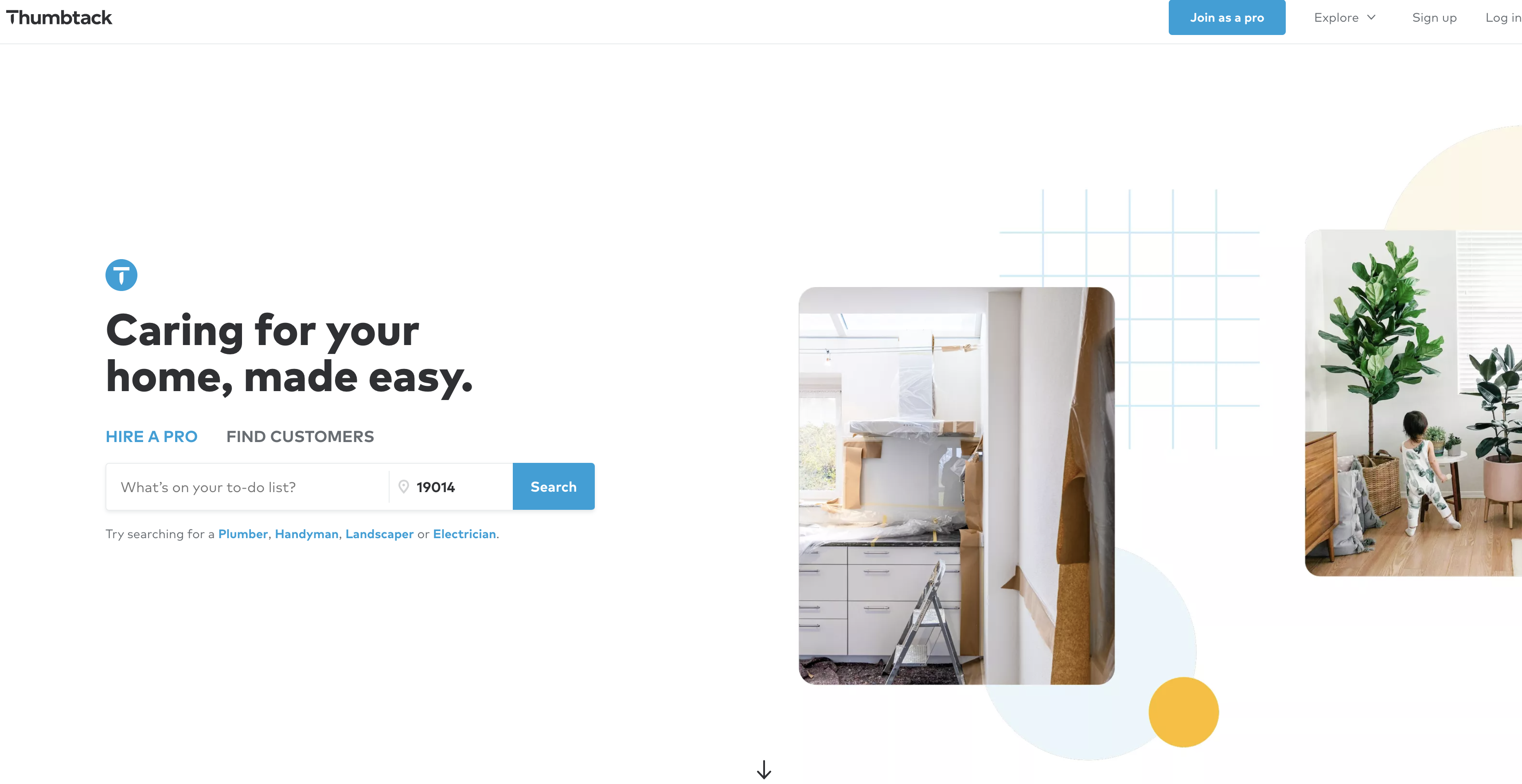
Businesses can create a free profile on Thumbtack and list their services, which customers can then browse and contact for more information. Here’s how to set up a profile on Thumbtack.
Here’s an example of the profile:
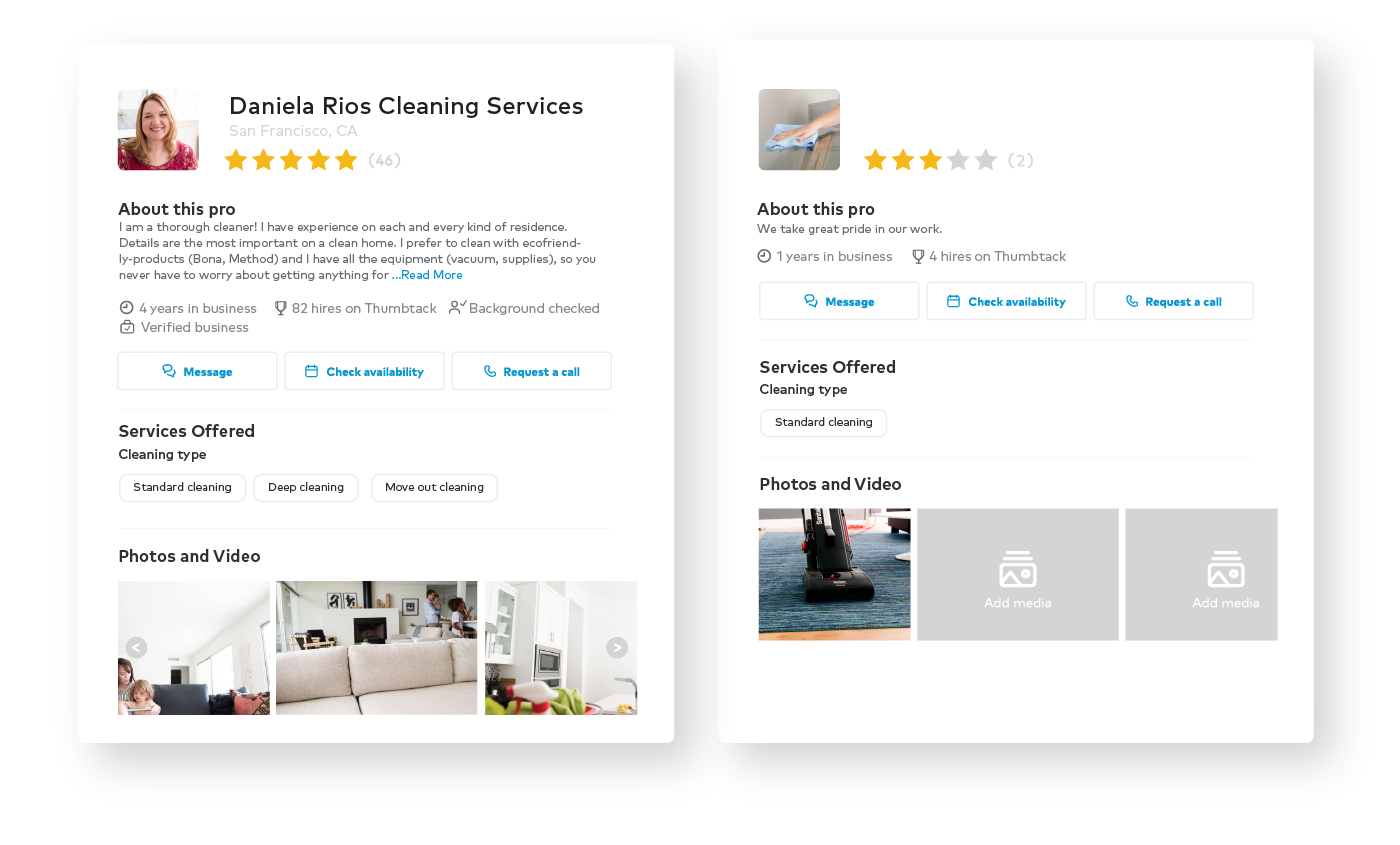
Pretty cool, right?
The benefit of having a profile on Thumbtack is that it allows businesses to reach a wider audience and it makes it easier to connect with potential customers.
Think of it as another advertising channel.
Typically, service-based businesses will invest in the following channels:
- Word of mouth & referrals
- PPC (paid search with Google Ads)
- Social media
- Organic/SEO
- And 3rd party-lead vendors/marketplaces like Thumbtack.
So it’s just another tool to add to your tool-belt when it comes to lead generation.
What type of businesses use Thumbtack?
Thumbtack.com is used by a variety of businesses, including:
- Home improvement contractors
- Beauty professionals
- Event planners
- Pet services
- Tutors
- Photographers
- and many more
If you’re operating a service business and you need leads, Thumbtack can probably help you.
Something that I love about Thumbtack:
Within your Thumbtack account, you can set filters for the type of leads they’re looking for and Thumbtack will match them with customers who match specific criteria.
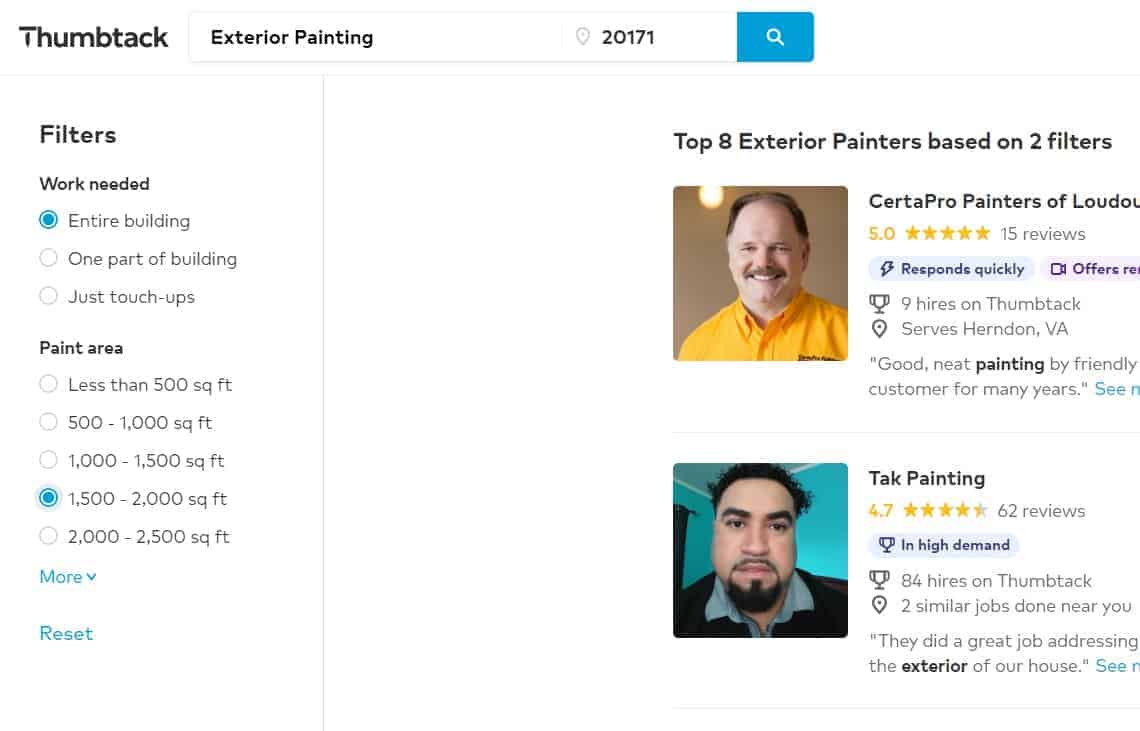
It’s very ‘set it and forget it’ in terms of generating the leads.
Although you still have to do the work to follow up.
You simply tell Thumbtack what type of leads you want, then it will go out and get those leads for you.
How much does Thumbtack cost per lead?
So, how much does Thumbtack actually cost?
Here’s some insight into their pricing straight from their product page.
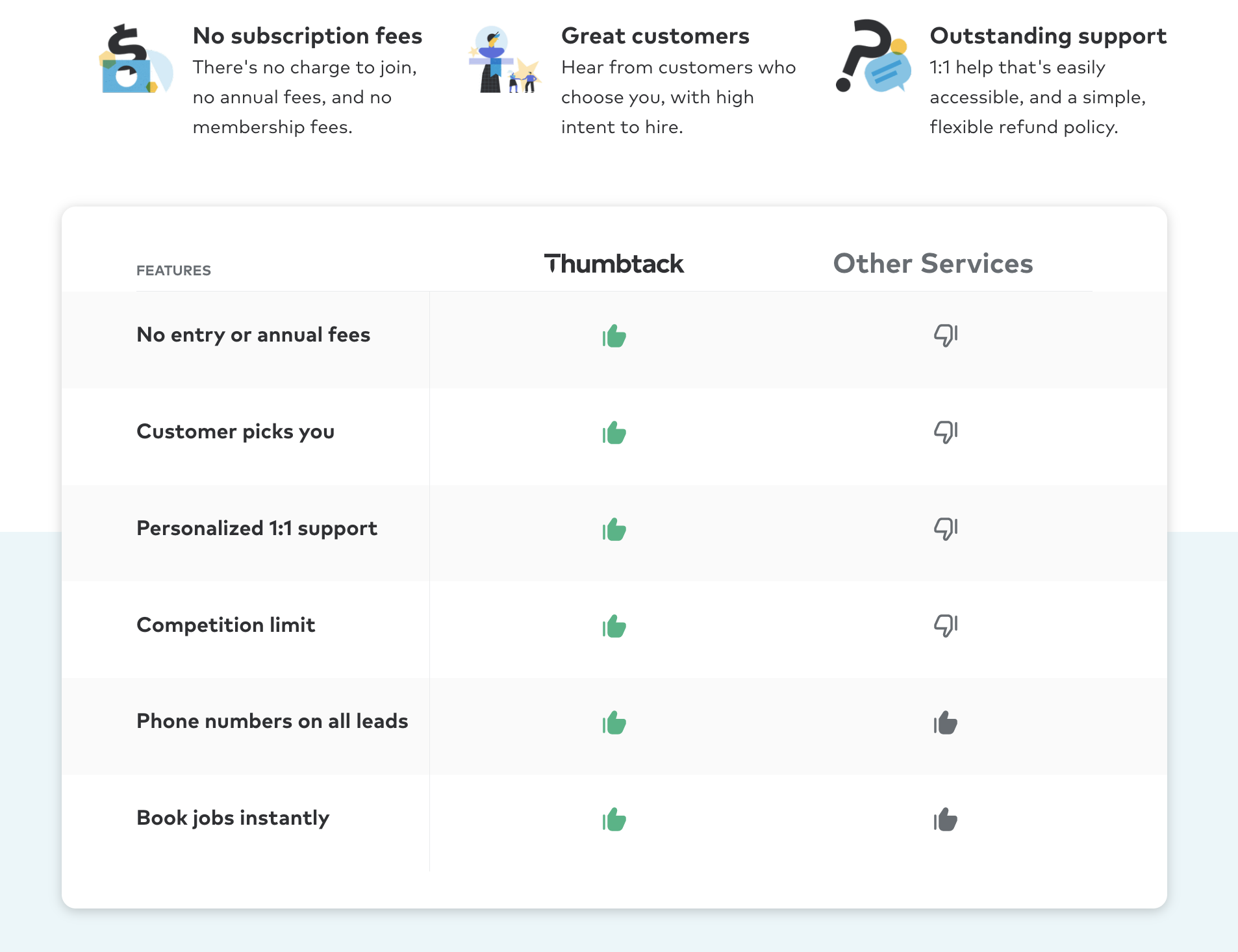
The first thing to note is that Thumbtack doesn’t force you to pay entry or annual fees.
Instead, you pay for leads and bookings.
So, what does each lead cost?
Unfortunately, it’s not a straightforward answer.
The cost of Thumbtack leads depends on a variety of factors, such as the type of service you’re offering and the customer’s location.
Generally, leads start at $10 and can go up to $100 or more depending on the service and customer.
I realize that the above is. a huge range so here’s a breakdown that lists the cost per lead (CPL) by industry.
- Home improvement contractors: $10-50 per lead
- Beauty professionals: $15-50 per lead
- Event planners: $20-100 per lead
- Pet services: $15-50 per lead
- Tutors: $10-30 per lead
- Photographers: $20-75 per lead
- Moving services: $20-75 per lead
- Cleaning services: $15-50 per lead
- Landscaping services: $20-75 per lead
- DJs: $30-100 per lead
In addition, businesses can purchase lead credits, which allow them to pay a flat rate for a certain number of leads.
While the pay-per-lead model is great, especially for service businesses, it can sometimes be hard to get a true sense of costs, which is one of the main downsides of this model.
And there are many factors that impact your cost per lead such as seasonality, lead quality, and your close rates.
Therefore, to get a sense of the lead costs through Thumbtack.com, we need to factor in potential close rates and do a little math.
What are Thumbtack’s lead close rates?
Your lead costs on Thumbrack will vary based on your lead volume and your close rates.
Close rates refer to the percentage of leads that you convert into customers.
From what I hear, most businesses typically close between 10-30% of their leads on the Thumbtack platform.
Let’s walk through the math to get a sense of pricing:
- Let’s say that you close 15% of all leads that come through Thumbtack.
- And let’s say that the average cost per lead is $20.
- This means that 100 leads will cost $2,000 (100 leads * $20).
- If your close 15% of the 100 leads, then you will turn 15 of your leads into paying customers.
In this case, every lead you get from Thumbtack costs $20 and every new customer costs $133.34.
If a customer is worth more than $100 to your business, then Thumbtack might be worth it.
Keep in mind, these numbers are all very hypothetical. The true lead costs and close rates will vary by industry and the level of effort that you invest into Thumbtack.
If you don’t have a sense of your historical close rates, especially on Thumbtack, then my recommendation is to get some data first by thinking of Thumbtack as a test.
Establishing your own CPL baselines by putting Thumbtack to the test
Let’s be real — the example above is just a hypothetical scenario that doesn’t ultimately answer the question about your true Thumbtack lead costs.
And that’s because it’s super hard to say because there are so many variables that impact lead costs. While the example should help you ballpark what Thumbtack might cost, if you really want to know the actual costs, then my advice is to run a small test on Thumbtack to establish a baseline cost per lead.
For example:
Try generating something like 25-50 leads on Thumbrack and measure the following:
- Total leads
- Thumbtack cost per lead (CPL)
- Lead close rates
- Cost to acquire new customers from Thumbtack (CAC)
The nice thing about testing Thumbtack this way is that you can use your own data to validate whether or not Thumbtack is worth the investment.
Maybe you’ll find out the leads are horrible and you can’t even come close to breaking even.
Or, maybe you’ll find out that Thumbtack is one of your next best acquisition channels to add to your marketing mix.
Common complaints about using Thumbtack.com
Is Thumbtack still a good platform to use in 2023?
Let’s take a look at some of the common complaints.
Complaints about using Thumbtack for lead generation include high lead costs, low close rates, and the inability to target specific customers.
Additionally, some businesses have found that the leads they receive are often not qualified or don’t match their criteria. As a result, businesses can find that their time and money invested in Thumbtack lead generation is not always worth the effort.
Let’s dive into the complaints in more detail:
Complaint #1 – Too much competition
One of the biggest complaints is that there’s far too much competition on Thumbtack.
This is because Thumbtack allows businesses from all over the world to list their services and compete for leads. This can make it difficult for businesses to stand out and be seen by potential customers.
In addition, the competition for leads can drive up the cost of leads, making it more expensive for businesses to get the leads they need.
To be fair though, the same could be said about Google if you’re running PPC or SEO.
For example, if you’re running Google paid search ads, then you’re competing with other competitors in your market. This drives costs up and your competitors are always a click away.
In this day and age, it’s pretty hard to find a platform without competition.
Complaint #2 – Low-quality leads
Another common complaint is that Thumbtack can often generate low-quality leads.
This is due to a variety of reasons such as:
- The business has not created a compelling profile
- The prospect was in ‘research mode’ and found some other competitor through Thumbtack or an alternative site like HomeAdvisor Google Search, etc
- Prospect’s budget doesn’t match the cost of the service
In addition, some businesses have found that the leads they receive are too general and not qualified enough to convert into customers. As a result, businesses can find that their investment in Thumbtack lead generation is not always worth the effort.
When it comes to lead qualification, there are many tools to help. In fact, this is one of the reasons why I built GetLeadForms. If you’re looking to generate more qualified leads, then you can grab a free trial of GetLeadForms today.
Complaint #3 – Low close rates
Remember the lead close rates that we spoke about above?
Unfortunately, one of the comment complaints about Thumbtack is low close rates.
This is for a variety of reasons, such as the customer’s budget not matching the cost of the service.
Is this a Thumbtack issue?
It’s hard to know for sure.
There are so many factors that go into close rates. From the type of leads that Thumbtack is sending you, to your own sales and follow-up process.
The best way to know for sure is to test Thumbtack on your own to find out for yourself.
Pros of using Thumbtack for Lead Generation
Despite the cons above, there are many pros to using Thumbtack for lead generation.
Some of the benefits include:
- Reach a wider audience than you could on your own
- Easier to connect with potential customers
- Set filters for the type of leads you’re looking for
- Target your ideal customers and maximize your chances of success
- Provides you with a low-effort way to source leads on auto-pilot
Thumbtack is just another tool to add to your arsenal. While I would never recommend relying solely on Thumbtack as your main source of leads, it wouldn’t hurt to use the platform, if you have the budget.
Alternatives to Thumbtack.com
Alternative #1: Other lead platforms marketplaces like Thumbtack
Depending on your budget and goals, Thumbtack can be a great source for new leads.
But, it’s not the only game in town. Here are some alternatives.
Just like Thumbtack, most of the alternatives above are either marketplaces or services that help you generate leads on autopilot so to speak.
Alternative #2: Your very own website
Your very own website is often one of the most underrated sources for more leads and can often be a great starting point.
Whether you’re ready to jump into Thumbtack or not, it’s worth noting that your website can be a great source of leads.
There’s a very good chance that your website is receiving traffic as we speak.
This traffic is coming in from the following sources: inbound channels like SEO and PPC, social media, referrals, past clients, and even platforms like Thumbtack.
And there’s also a good chance that only a small percentage of this traffic is converting into leads. After all, the average service business website converts just 3% of visitors into leads.
To keep things simple, let’s imagine that your website turns just 3% of all visitors into leads.
And now let’s imagine that you make some simple changes to your website to get 7% of visitors to convert.
This means that for every 1,000 visitors that you get, you’ll go from getting 30 leads (at a 3% conversion rate) to 70 leads (at a 7% conversion rate).
You just more than doubled your conversion rate, without having to shell out more money to get these leads!
So here’s the big question:
How do you actually do this?
How do you turn your website into a lead capture machine?
The best way to do this is by using a tool like GetLeadForms.
With GetLeadForms, we give you a tiny lead capture widget that gets installed across the core pages of your website that gets traffic. This includes your home page, blog pages, and core landing pages.
The widget looks something like this:
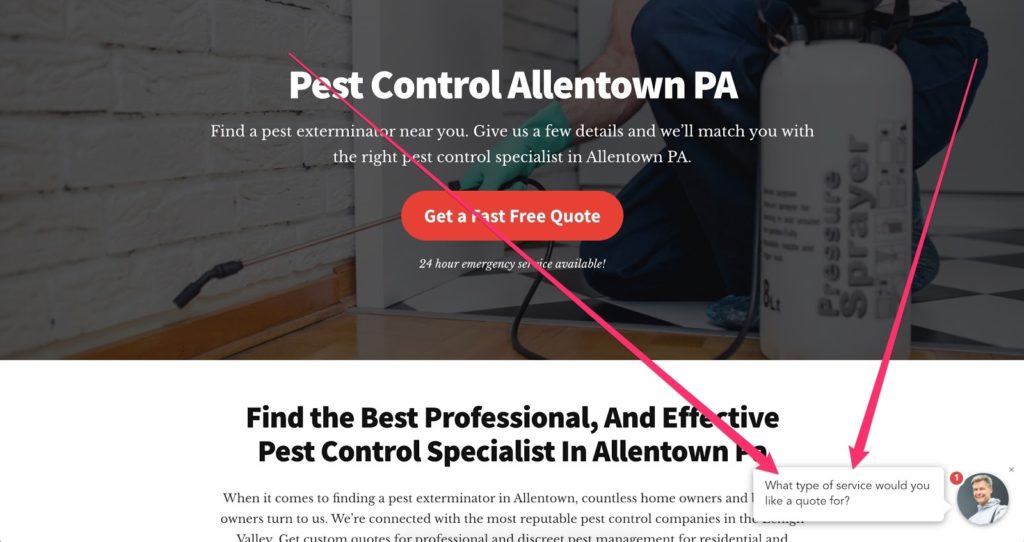
Notice that it shows an image from someone at your company and it also has a friendly welcome message to engage the prospect.
When clicked, the widget opens up a friendly-conversational lead gen form.
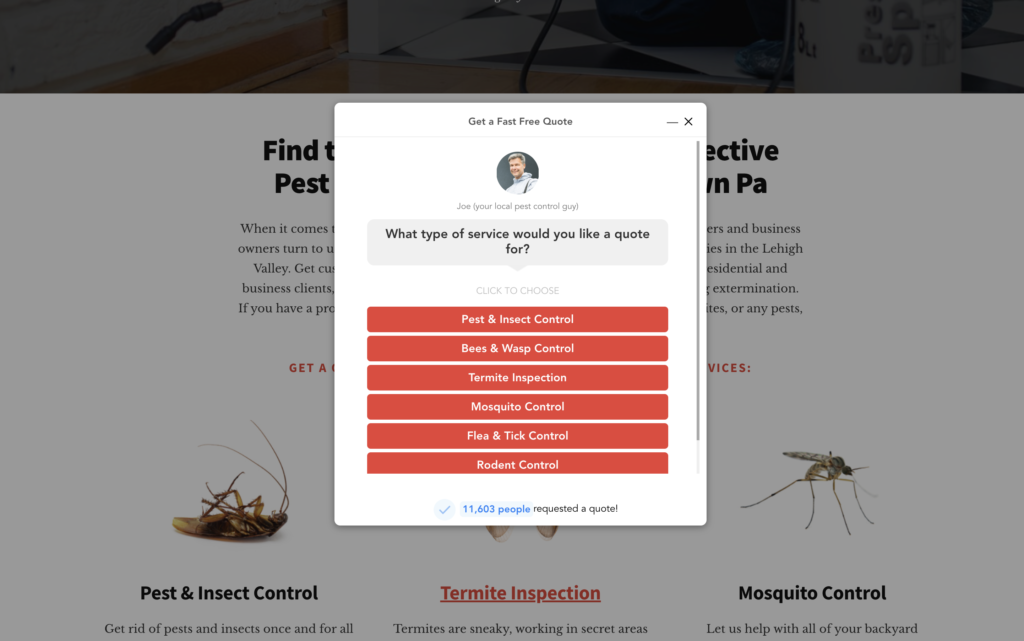
This form is built to engage, qualify, and convert.
It asks one question at a time so you get more leads.
Businesses that use our lead capture widget tend to see around a 2X increase in inbound leads.
You can grab a free trial here.
Or take it for a test drive with this demo.
Final thoughts on using Thumbtack.com for lead generation
In this post, I pointed out what Thumbtack is and who it’s best suited for.
I also explained that it’s difficult to gauge Thumbtack’s lead costs, due to the many variables that play a role in determining the cost per lead on Thumbtack.
While I was able to a range of lead costs per industry, my advice is to take Thumbtack for a test drive on your own to establish your own CPL baselines.
And finally — if you end up finding that Thumbtack isn’t worth it, or if you’re looking for a way to generate even more leads, then don’t forget the many alternatives to Thumbtack, including your own website.
Interested in seeing how Thumbtack generates so many leads? Check out this post for a look inside their million-dollar lead gen strategy.

